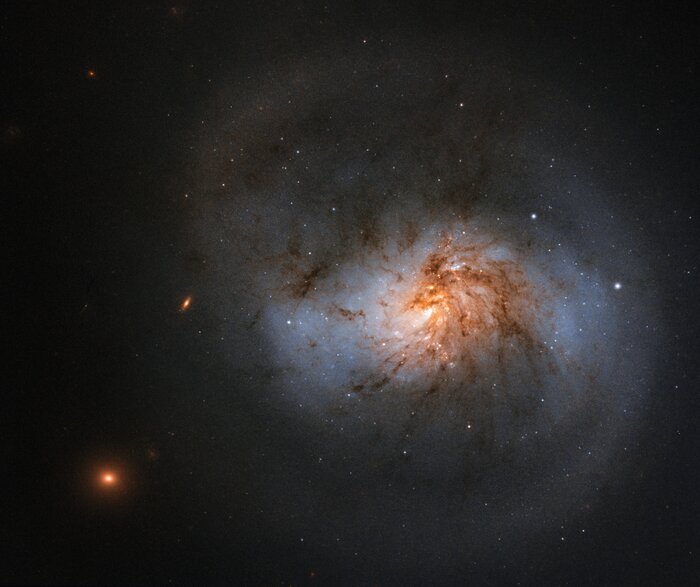
This week’s image from the Hubble Space Telescope shows the barred spiral galaxy NGC 1022, located in the constellation of Cetus. Scientists are observing this particular galaxy in order to study the relationship between the size of a galaxy and the size of the supermassive black hole at its center. They know that most galaxies, including the Milky Way, have huge black holes at their heart, but they aren’t sure exactly how galaxies and supermassive black holes evolve together over time.
“Hubble observed this image as part of a study into one of the Universe’s most notorious residents: Black holes,” Hubble scientists wrote. “Studies suggest that the mass of the black hole sitting at a galaxy’s center is linked with the larger-scale properties of the galaxy itself. However, in order to learn more, we need observational data of a wider and more diverse range of galaxies — something Hubble’s study aims to provide.”
Recent research into the relationship between supermassive black holes and the galaxies in which they reside reveals intriguing findings. For example, the famous supermassive black hole in the galaxy Messier 87, which was imaged for the first time using radio telescopes last year, is absolutely enormous, with an estimated mass of 6.5 billion times that of our sun. And the galaxy in which it resides is equally huge, being one of the most massive galaxies in the universe. This added to the evidence that the size of a supermassive black hole was linked to the size of a galaxy.
On the other end of the scale, a tiny galaxy called ESO 495-21 was found to have an unexpectedly huge supermassive black hole at its heart. This suggests that supermassive black holes develop first, then galaxies form around them, rather than the other way around. Other anomalies exist, however, such as a galaxy called NGC 6240 which was found to have three supermassive black holes in one galaxy.
Scientists are continuing to study galaxies like NGC 1022 to learn more about the relationship between these monstrous black holes and the galaxies that host them.



